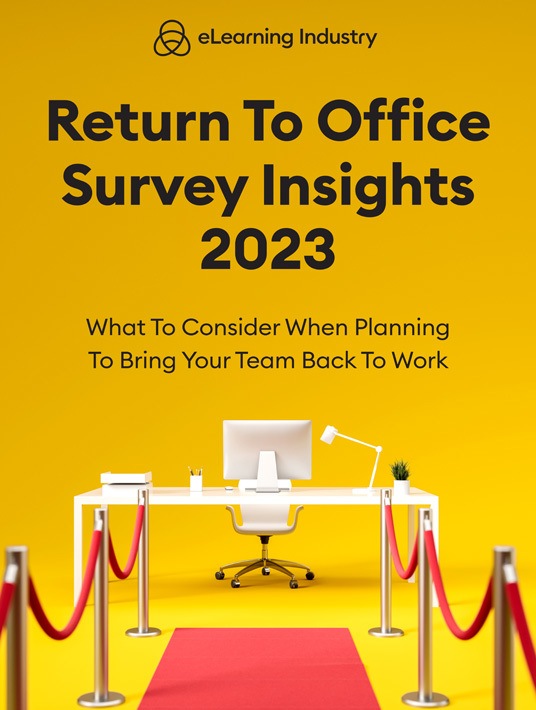The Importance Of Polarity Management In Learning Optimization
The volume, velocity, and complexity of change, coupled with exponential AI growth, require both leaders and learners to be more astute and deliberate in their learning journeys so that they achieve performance results. To successfully lead in every leadership role, leaders have to identify, manage, and master the polarities particular to their context. One of the most critical responsibilities that Chief Learning Officers (CLO) have is ensuring that their organization is constantly learning and growing. Chief Learning Officers must first design, develop and deliver the organizational learning strategy, as well as advise the Chief Executive Officer and their C-Suit team on how to drive organizational growth through learning. Designing, developing, and delivering a strategy implies managing polarities and allocating resources in the right places at the right time. This article discusses six fundamental polarities pertaining to learning that every Chief Learning Officer needs to master, in order to lead their organization to Learning and Development success.

6 Fundamental Polarities
Individual Learning Vs. Organizational Learning
One of the first polarities to master is the balance of allocating resources between individual learning and organizational learning. Individual learning focuses on each employee's personal Learning and Development, while collective learning emphasizes the organization's shared knowledge and skills. Both are important, but striking the right balance can be tricky. As a CLO, it's your job to ensure that individual learning is aligned with the company's overall goals and that collective learning opportunities are available to all employees.
Technical Skills Vs. Soft Skills
The second polarity to master is the balance between technical skills and soft skills for the workforce. Technical skills are job-specific abilities, such as data analytics, digital literacy, and financial analysis. Human or soft skills refer to interpersonal skills like communication, storytelling, and problem-solving. Both are critical for the workforce to be successful and for the organization to reach its performance goals, so striking the right balance is essential. One practical way to balance this polarity is to offer opportunities to the workforce to self-assess and discern their comfort level across technical and soft skills, and subsequently, to curate personalized learning pathways in order to address the various skill needs based on the respondent's self-assessment results.
Formal Learning Vs. Informal Learning
The third polarity to master is the balance between formal learning and informal learning for the workforce. Formal learning refers to structured learning programs, typically compliance programs which are required for all members of the workforce to complete, while informal learning is more self-directed and includes online learning journeys, peer-to-peer learning, and experiential learning, among others. Allocating too many resources to formal learning can be expensive and time-consuming, while too much emphasis on informal learning can be haphazard and inefficient if not curated and managed well in collaboration with the business units and subject matter experts. One practical way to manage this polarity is establishing learning academies [1] that allow the organization to balance the polarity between formal, structured, and curated personalized learning.
Reactive Learning Vs. Proactive Learning
The fourth polarity to master is the balance between reactive learning and proactive learning. Reactive learning is responding to immediate needs and problems, while proactive learning anticipates future challenges and prepares for them in advance. Too much emphasis on reactive learning can leave the organization constantly putting out fires, while too much emphasis on proactive learning can lead to wasted time and resources on hypothetical scenarios. One way to balance this polarity is to partner with the business units to understand their business performance goals and any challenges getting there, and then explore how to offer learning that addresses the challenges and offers the workforce opportunities to learn to get ahead of the change.
Short-Term Learning Vs. Long-Term Learning
The fifth polarity to master is balancing the allocation of resources between short-term learning and long-term learning. Short-term learning focuses on immediate needs and goals and is often referred to as on-the-job learning, while long-term learning looks to the long game and the future [2] and prepares for upcoming challenges. Balancing the two is critical. Allocating too many resources to short-term learning can lead to neglecting important long-term goals, while too much emphasis on long-term learning can lead to a lack of immediate progress and results. This means that in the long game, as a CLO, you focus on the compounding of resources. As Thomas Waschenfelder explains in his article [3] "Play The Long Game: Delay Gratification Now To Get More Later," compounding interest is the key to the long game, including compounding resources like skills, and time is the most significant force multiplier.
Learning For Performance Vs. Learning For Personal Development
The sixth polarity to master is balancing the allocation of resources to the workforce between learning for performance and learning for development. Learning for performance focuses on improving specific job-related skills, including soft and technical skills, while learning for personal development focuses on personal growth by expanding one's abilities in sports, hobbies, and interests not directly related to the workplace, including pottery making, sailing, and yoga. Balancing this polarity is critical because if, as a CLO, you place too much emphasis only on the workforce's learning for performance, you may end up neglecting the workforce's personal growth and development. At the same time, too much emphasis on learning for development can lead to a lack of focus on job-related skills and performance goals. As HBR research reveals [4], when employees cultivate their own hobbies and interests, they are more confident, productive, creative, and engaged at work, which ultimately improves business performance results.
Conclusion
Mastering polarities is key to becoming a successful Chief Learning Officer. As you and your team strategize in allocating learning resources and forming a learning strategy for the organization, you will need to balance these six polarities between individual and collective learning, technical and soft skills, formal and informal learning, reactive and proactive learning, short-term and long-term learning, and learning for performance and learning for development. This article offers practical tactics to explore managing these polarities so that you can ensure that your organization is always growing and learning. With a strong focus on these polarities, you can lead your organization to success and keep it at the forefront of innovation, growth, and strong business performance results.
References:
[1] Optimizing Learning Academies
[2] Growth Blueprint: Futures Thinking
[3] Play The Long Game: Delay Gratification Now To Get More Later
[4] Why You Should Work Less And Spend More Time On Hobbies






